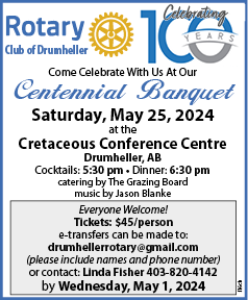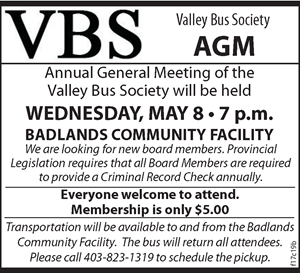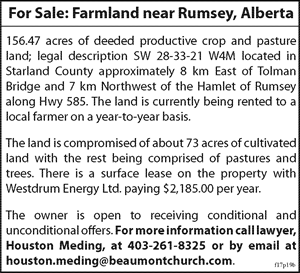
On Tuesday, December 8, the Subdivision and Development Appeal Board (SDAB) reached an unanimous decision to deny the appeal filed by Lawrence Eisler and which was heard on December, 1 at Council Chambers, Town Hall.
Eisler had filed the appeal following the refusal of a development permit on the height of a fence-like structure at 436, 3rd Street East, Drumheller. During the appeal, Eisler, together with members of the community, explained that he felt this structure was more than a fence and added value to Drumheller.
The SDAB’s decision was based on the following reasons:
The board considers the structure to be a fence as defined by the Land Use Bylaw 10.08 which states: “Fence” means a physical barrier constructed out of typical building material for the purpose of providing privacy or preventing unauthorized access or both.
The SDAB also agreed that the fence does not comply with the Town’s Land Use Bylaw 10.08 Section 41 (b), which regulates the height of a fence in a residential district to a maximum height of 1.2 m (4 ft.).
The board also stated that, having considered the opinions of the neighbours’ and others’ presentation, the board was of the opinion that consideration should be given to future landowners, particularly with regard to the encroachments of portions of the fence in to the neighbouring side yards.
Eisler commented to inSide about the outcome: “obviously I am disappointed with this decision”. Eisler explained he was hoping people involved in the whole process would have looked past bylaws and have considered the contribution he was making to the town by beautifying his yard. Eisler expressed his frustration that: “the role here of Council and the Community Planning board isn’t to say whether any of this stuff is in the best interest of Drumheller, it’s only to say whether or not a bylaw has been broken. Well, we know from the beginning I broke a bylaw! So why spend all this time and having these people coming in and voicing what they thought was important when it doesn’t matter? It makes no sense.”
Eisler also questioned : “so if I want to say, well, this historical area of Drumheller which is really beautiful and should be treasured is being limited by bylaws that are about the suburbs, and I think these bylaws should be changed and there should be relaxation for this area, where do I go?”
Eisler was given until April 30, 2010 for the front yard structure to be reduced to 4 ft. high or, alternatively has 30 days from the issue of the order to appeal to the Appellate Division of the Supreme Court of Alberta.
Asked whether Eisler will appeal this decision, he explains: “now it becomes expensive, at the end of the day I am not sure at what point do I keep giving of myself and my time and at what point do I stop? I am leaning towards not doing anything right now as it takes a lot of energy physically and emotionally.” He concluded: “Although I am very disappointed with the outcome, I am incredibly appreciative about the people that stood up for me, that means a lot to me."




























